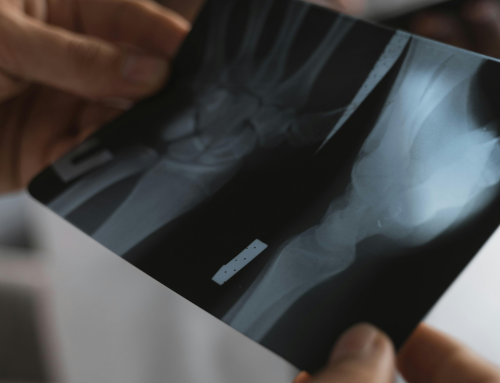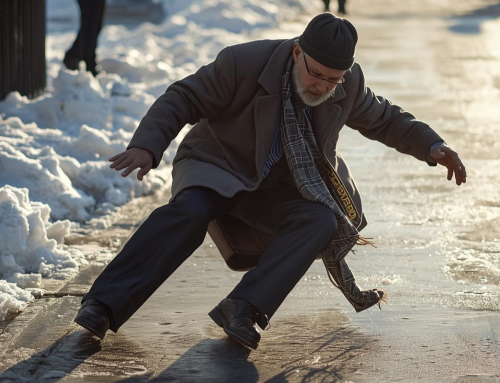When you think of a fracture, you may imagine it happened from a slip and fall, a car accident, or a sports injury. But several different types of fractures can occur, even from simply training for a marathon. The worst of them all is a compound fracture. Not only are they painful, but they also aren’t so pleasant to look at either.

There are two different primary types of fractures – simple and compound. While nothing may seem simple about your bones breaking, you’ll understand why it makes a significant difference in a second.
Simple fractures, also known as closed fractures, are when the bone breaks but doesn’t rupture through your skin. Compound, also known as open fractures, will pierce through the skin and require more attention during the healing process. If you can see your bone, that’s a sign you need to go to the emergency room asap as you’ll likely need surgery. Read on to learn more about the different types of fractures to understand what’s happening when a bone breaks.
Types of Fractures
You already know the two main fracture categories – a compound (open) fracture or a simple (closed) fracture. But there are further sub-categories that your fracture could fall into.
Displaced Fracture
When your bone suffers from a displaced fracture, that means parts of your bone travel so much that a space is formed around the fracture. Non-displaced fractures are still shattered bones, but the fragments were not displaced far enough to be out of alignment during the break.
Partial Fracture
A partial fracture is a crack in the bone that doesn’t completely break it into two or more pieces. Even though it’s more minor than other types of fractures, it can still take an average of six to eight weeks to heal.
Complete Fracture
As you can probably guess, a complete fracture is when the bone completely breaks into two or more pieces. You may also hear your doctor refer to this as a “break” since these terms are used interchangeably.
Stable Fracture
A stable fracture is better than a displaced fracture. This means that the broken ends of the bone haven’t moved too far out of place and still line up. Since it maintains its original position, healing is less likely to have further complications.
Transverse Fracture
When a bone breaks in a straight line horizontally, this is referred to as a transverse fracture. This type of fracture is more likely to happen in a fall, car accident, or sports injury.
Spiral Fracture
Spiral fractures sound just like the name suggestions – it happens when the fracture spirals around the bone. This is more likely to occur in long bones, such as the tibia, fibula or femur, but it can still happen in your arms as well.
Stress Fracture
Stress fractures can occur from repeated movements, such as running long distances or jumping up and down over and over. They’re caused by repetitive force and overuse, causing tiny cracks in a bone. It can also be common in osteoporosis patients. On an X-Ray, it resembles a corkscrew. These are more likely to happen when you’ve sustained an injury in a twisting motion, such as playing a sport or being involved in an accident.
Oblique Fracture
Oblique fractures are similar and sometimes referred to as complete fractures. This just means that the break is in a diagonal position across the bone. They’re typically seen after someone has suffered a sharp blow from an angle due to a fall.
Compression Fracture
A compression fracture refers to your bones being crushed during the break. They’ll usually be wider and flatter than they were before the injury and most often occur in the spine. If it happens in your spine, it can cause you to stoop forward because of the vertebrae collapsing.
Greenstick Fracture
A greenstick fracture is also known as a hairline fracture. It’s when the bone bends and cracks instead of completely breaking into separate pieces. They’re more typical in children since their bones are softer and more flexible.
Avulsion Fracture
An avulsion fracture is also more common in children because it’s typically caused by pulling hard on their arms or legs. This type of fracture occurs when a fragment gets pulled off the bone by a tendon or a ligament.
Comminuted Fracture
A comminuted fracture is more likely to result from a high-impact trauma, such as a hard fall or car accident. This happens when the bone is broken in 3 or more places, with bone fragments present at the fracture site.
Segmental Fracture
Segmental fractures got their name because of the floating segment of bone that sits between the break. This is seen more often in long bone fractures, and they’re known to take longer to heal.
Impacted Fracture
An impacted fracture can only occur when a significant amount of force is applied to the fracture site. This happens when the broken ends of the bone are jammed together.
By now, you’ve realized that you can break your bones in a number of creative ways. Each type of fracture has a different healing timeline and level of urgency that requires medical attention. Due to its serious nature, a compound fracture requires a quick trip to the hospital ASAP. When the bone pierces through the skin, you are more susceptible to complications from the break if dirt and germs affect the site.
No matter the type of fracture you have, it can affect your ability to work or enjoy life for weeks or, in the worst-case scenario, months. The good news for Canadians is there’s a self-treatment device that can heal fresh fractures 38% faster and can even heal 86% of non-union (aka, failed to recover) fractures. Learn more about the life-changing product to see if you can benefit from faster healing.
Have you or someone you know ever had a fracture? What type was it? How long did it take to heal? Share your comments with our readers in the section below, so they know what to expect.





